Making violins isn’t easy.
Making good violins is even harder.
An excellent violin is a real work of art.
Perhaps that explains why the design of classical violins has remained virtually unchanged during the past 200 years. Violinists, and violin makers, regard it as something sacrosanct.
A different violin
Long ago I started wondering how the vibrations of the violin’s strings are transformed into sound. And I made my first asymmetrical violin in 1966. It looked nice, I thought, but it didn’t sound that great. It took me more than fifty years to find out why:
People want different things from a violin nowadays than they did in the 17th century.
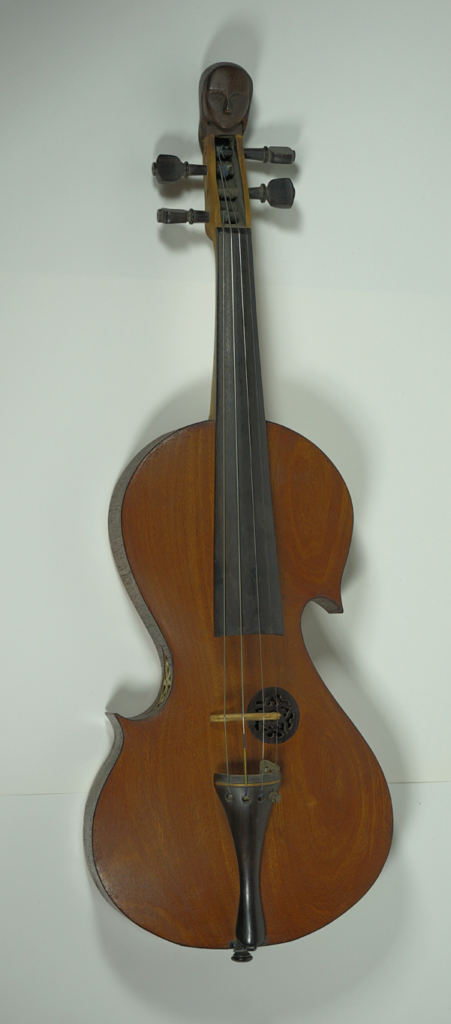
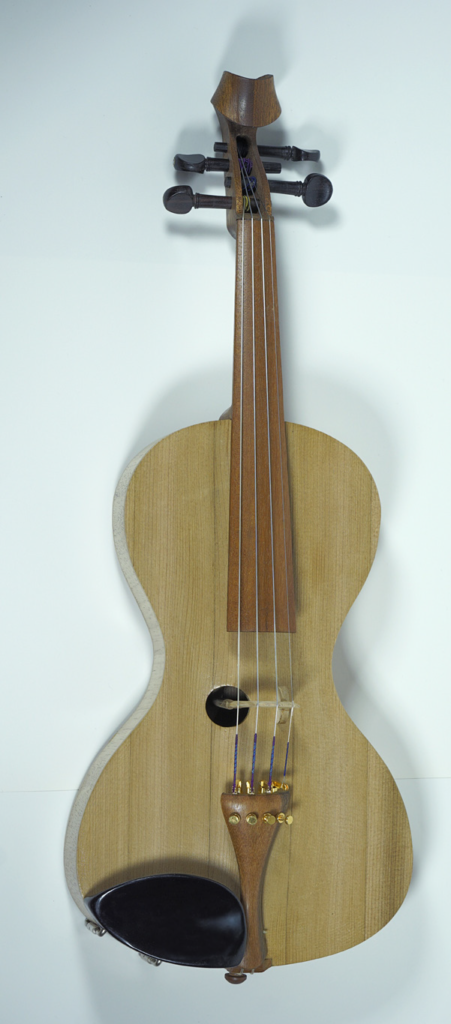
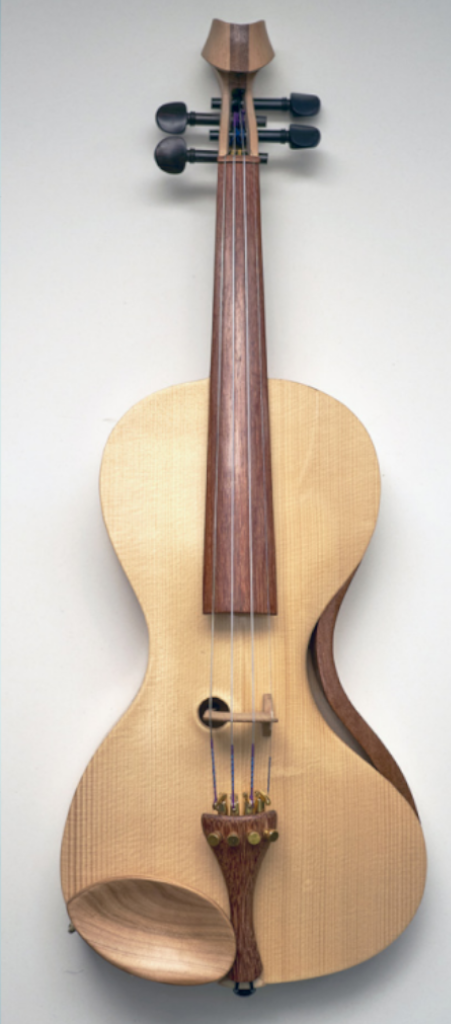
First of all, the public:
Their taste has changed thanks to amplified music. There is no need anymore for a harsh high pitched tone to get any projection at all. So what was once a necessity could now turn in to a nuisance.
The microphone needs to like your instrument. It now is the most important listener.
Then the players:
They have all kinds of new requirements, such as “Where do put my mic? Can I have an on/of switch please? Maybe less stress on de shoulder and sound pressure on the ears?”
An excellent classical violin was never made for that.
Can I design, with the help of new CAD/CAM techniques, a good perhaps an excellent, violin with fewer parts and less effort? Good as a classical violin, but different. An instrument as an extension for violin players, not a replacement.
This question is crucial for the kind of violin I had in mind. Now in 2022 I can present the result, not just de violin but also a set of rules, and an insight as to how it works.
The Dutch violin it self is already a few years old, and has improved in those years. The background and rules are new.
in Download you’ll find:
In: “ The Dutch Violin .pdf ” you can read how and why it works.
There is no maths in it, but it is very compact and complex.
“DV Instructions” is for makers. Just a basic overview of the process.
“4th axis” gives a tip for milling on a 3 axis mill.
All .STL files are added to make your own violin or viola. (new) and more relevant data.
The design details presented below are given for a violin,
but apply (with appropriate changes) to any bowed instrument.
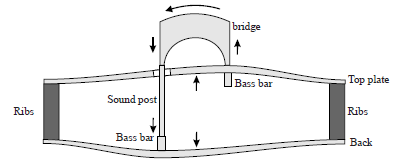
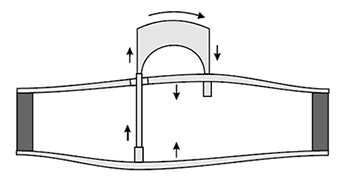
The sound is produced by the elliptical movement of the strings when they are bowed. This movement makes the top of the bridge move slightly from side to side. The arrows indicate the resulting movements of the top plate and back. It is these vibrations of the top plate and back that generate the sound you hear when the violin is played.
A new bowed instrument
The Dutch Violin is asymmetrical.
The ribs are massive but light, the back and the top plate are made of spruce, cedar or any other lightweight tonewood – though designs using any other lightweight material or membrane are also possible.
One leg of the bridge is connected to the bass bar mounted under the top plate.
The other leg of the bridge is connected to the sound post, which rests on the bass bar mounted on the back of the violin.
The sound post passes through a hole in the top plate.
The back and top plate vibrate in opposite directions. As a result, these vibrations enhance one another, providing a greater effective vibrating surface area.
This means that the top plate does not have to vibrate as hard as in the classical design.
The new design converts the movement of the strings into sound more effectively.
This benefit can be used to improve and shape the sound in different ways, for example by varying the type of wood used, the curvature of the top plate and the back, and the size and positioning of the bass bars.
The strength of the construction largely depends on that of the ribs.The massive ribs used in this design can also house any electronics or other add-ons included.
It goes without saying that the sound this instrument produces differs from that of a classical violin.
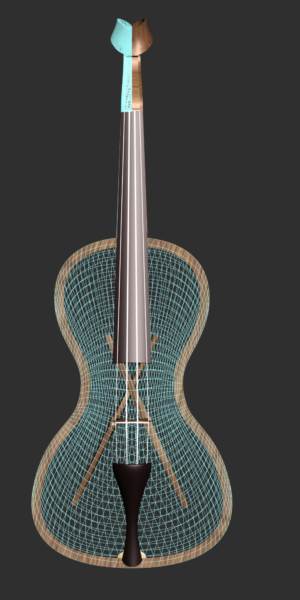
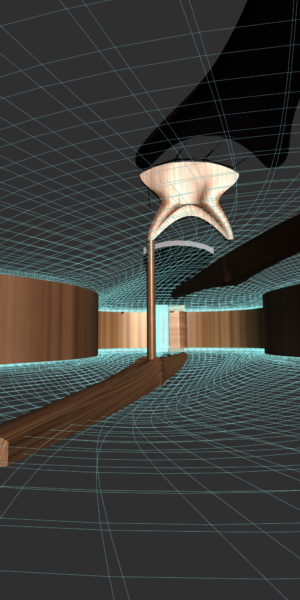
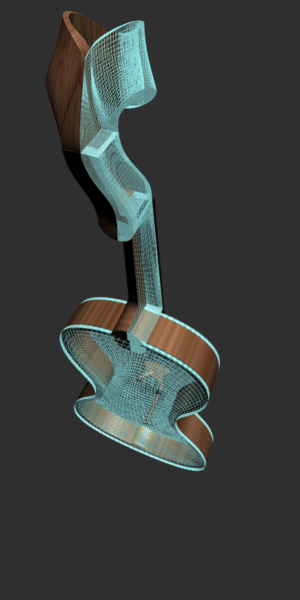
Modern design and production techniques
The use of modern digital techniques such as computer numerical control (CNC) makes the design and production process much more flexible.
You can just choose the design variables you want to change in your search for the optimum design.
CNC-made parts are more or less identical, and thus interchangeable.
CNC makes the design process more flexible (for example, you could make a mirror violin).
CNC files make it possible to produce anywhere in the world, using uniform digital data and locally sourced materials.
